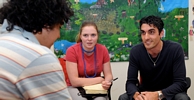|
|
 Acne (1,500) Acne (1,500)
 Addictions (1,500) Addictions (1,500)
 Advice (1,500) Advice (1,500)
 Allergies (1,092) Allergies (1,092)
 Alternative Medicine (1,500) Alternative Medicine (1,500)
 Anti Aging (1,500) Anti Aging (1,500)
 Breakup (1,500) Breakup (1,500)
 Cancer (1,499) Cancer (1,499)
 Dental Care (1,500) Dental Care (1,500)
 Disabilities (1,500) Disabilities (1,500)
 Divorce (1,500) Divorce (1,500)
 Elderly Care (1,498) Elderly Care (1,498)
 Goal Setting (1,500) Goal Setting (1,500)
 Hair Loss (1,500) Hair Loss (1,500)
 Health and Safety (1,497) Health and Safety (1,497)
 Hearing (1,500) Hearing (1,500)
 Law of Attraction (1,499) Law of Attraction (1,499)
 Marriage (1,500) Marriage (1,500)
 Medicine (1,497) Medicine (1,497)
 Meditation (1,499) Meditation (1,499)
 Men's Health (1,500) Men's Health (1,500)
 Mental Health (1,500) Mental Health (1,500)
 Motivational (1,500) Motivational (1,500)
 Nutrition (1,495) Nutrition (1,495)
 Personal Injury (1,499) Personal Injury (1,499)
 Plastic Surgeries (1,500) Plastic Surgeries (1,500)
 Pregnancy (1,496) Pregnancy (1,496)
 Psychology (1,500) Psychology (1,500)
 Public Speaking (1,500) Public Speaking (1,500)
 Quit Smoking (1,500) Quit Smoking (1,500)
 Religion (1,499) Religion (1,499)
 Self Help (1,500) Self Help (1,500)
 Skin Care (1,500) Skin Care (1,500)
 Sleep (1,500) Sleep (1,500)
 Stress Management (1,500) Stress Management (1,500)
 Teenagers (1,492) Teenagers (1,492)
 Time Management (1,500) Time Management (1,500)
 Weddings (1,500) Weddings (1,500)
 Wellness (1,500) Wellness (1,500)
 Women's Health (1,500) Women's Health (1,500)
 Women's Issues (1,500) Women's Issues (1,500)
|
The Achilles tendon is the largest tendon in the body and connects the gastrocnemius (calf muscle) to the back of the calcaneus (heel bone).
The Achilles tendon is what allows a person to stand up on their toes as well as jump up and down. The Achilles tendon is extremely strong and is capable of withstanding forces of 1,000 pounds or more.
However, it is also frequently predisposed to overuse and injury.
Achilles tendonitis causes localized pain which is often very severe in the tendon. Pain is usually felt about an inch and a half above the point where the Achilles tendon is attached to the heel. The pain is aggravated by running or by walking, particularly when the ambulation is uphill.
The pain is typically aggravated by walking and relieved by rest.
While often occurring after exercise for which a person has either not warmed up for, or is unaccustomed to doing, Achilles tendonitis may also develop following direct injury. It may also present without a specific predisposing event.
Some forms of inflammatory arthritis such as psoriatic arthritis, Reiter's disease, and ankylosing spondylitis may cause Achilles inflammation. However, this type of inflammatory problem is distinct from the Achilles tendonitis occurring with overuse.
The typical conservative non surgical approach has been to use rest, non-steroidal anti-inflammatory drugs (NSAIDS), orthotics, stretching, massage, and therapeutic ultrasound.
Unfortunately, Achilles tendonitis may not respond to these measures. In the past, orthopedic surgeons would operate and the recuperative period would be lengthy.
However, a newer treatment for tendonitis may be more effective and prevent the need for surgery. Percutaneous needle tenotomy is a technique where a small gauge needle is introduced using local anesthetic with ultrasound guidance. The needle is used to poke several small holes in the tendon. This procedure is called "tenotomy."
Tenotomy induces an acute inflammatory response. Then, platelet rich plasma, obtained from a sample of the patient's whole blood is injected into the area where tenotomy has been performed. Platelets are cells that contain multiple healing and growth factors. These include the following:
• Fibrinogen: helps with clotting and framework making.
• Adhesion molecules: helps cells to bind to each other
• Platelets: initiates clotting and inflammation
• IL-1: promotes migration of macrophages
• Platelet derived growth factor: helps with healing; stimulates growth of blood vessels; attracts macrophages
• Transforming growth factor B: stimulates formation of collagen
• Epidermal growth factor: stimulates connective tissue growth
• Vascular endothelial growth factor: stimulates formation of new blood vessels; promotes healing
The result? Normal good quality fascial tissue is stimulated to grow with natural healing of the tendon. With severe tendonitis, a patient may need to wear a boot for 2 weeks following the procedure.
While most people respond to one course of treatment, about 10-20 per cent of patients will require a second procedure. Whether a second procedure is needed is usally determined at 3 months following the initial procedure. Diagnostic ultrasound using Doppler to assess the amount of residual inflammation is useful.
|
|
|



